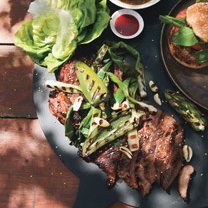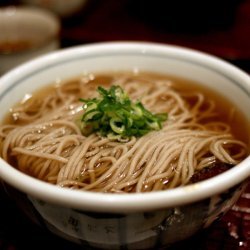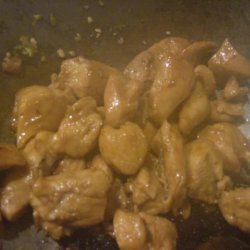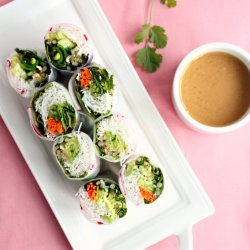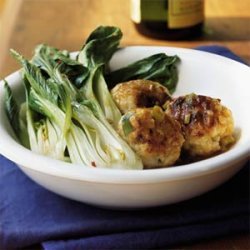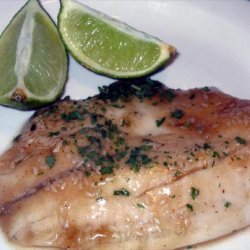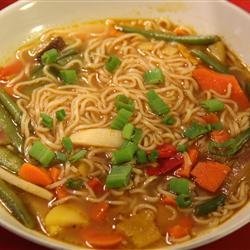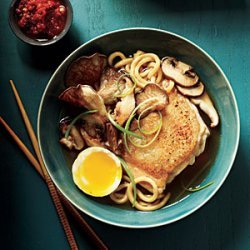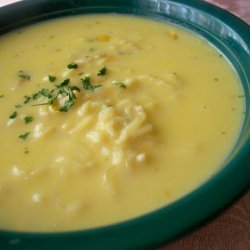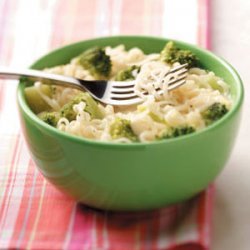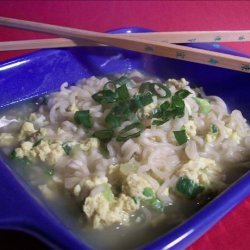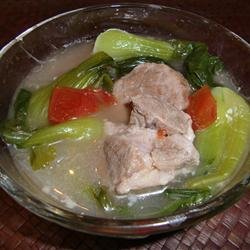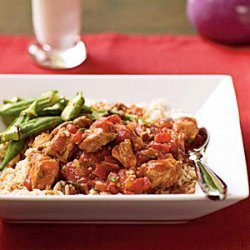Directions:
- Step 1: Have the butcher separate the pork hock bones.
- Step 2: Rinse well in running water to wash off blood. Boil in large pot for 15 minutes. You want to barely cover the bones with water.
- Step 3: Skim off as much scum as possible as it forms.
- Step 4: Drain in colander and use a brush to remove any bloody meat.
- Step 5: Use a saw and saw halfway down the center of the bones. Then use hammer to break bone.
- Note: I didn’t have to break the bones since my butcher’s pork hocks already had the marrow exposed.
- Step 6: The bones will be filled with marrow. Simmer for several hours until the marrow dissolves out from the bones.
- Step 7: Scum will form at the start. Carefully skim the scum off. On mid flame, maintain a low boil.
- Step 8: After scum has stopped forming, simmer for 6 hours or more. Add more water if the water level drops.
- Step 9: Making the noodles. After measuring out the ingredients, mix the flour and kansui together, then add the water. It may feel as if the amount of water is insufficient. This is normal.
- Step 10: Mix in bowl until a mealy consistency is achieved.
- Step 11: The dough will be very stiff. Use you body weight to form the dough into a ball.
- Step 12: Transfer to kneading surface and knead. Knead vigorously for 10 minutes. It is ok if the dough cracks or does not knead together well.
- Step 13: Form into ball, cover with plastic wrap and allow to rest in the refrigerator for at least 30 minutes. Make sure that the dough does not dry out.
- Step 14: While the dough rests, prepare the char siu. Brown the meat in a pan and then simmer in a pot for 2 hours in a sauce made from the remaining ingredients. Allow to cool in the pot.
- Step 15: After the dough has rested, roll the dough out with a rolling pin to a thickness of 5 mm and then insert into pasta machine. Start out with the highest thickness and then continue on the lower settings until the desired thickness is achieved.
- Step 16: If a pasta machine is not used, roll out the dough to the desired thickness with the rolling pin. Take into account that the noodles will expand 1.3 times when boiled.
- Step 17: The dough will not be that sticky, so a small amount of flour or potato (or corn) starch is sufficient for flouring. (Note that the recipe only shows the noodles being cut by a pasta machine and does not mention hand cutting).
- Step 18: A wooden box is best for storing the noodles, but if one is not available, use a metal tray lined with wax paper (to prevent sticking) and store in the refrigerator.
- Step 19: 2 hours after the pork bones have started simmering, the soup should become progressively white and cloudy. If tasted at this stage, the soup will not taste good since it will still have a raw flavor.
- Step 20: After the soup has simmered for 6 hours, The inside of the bones should now be empty and the soup should have a rich smell just like a ramen place.
- The stock is rich. It exactly like the picture, it’s not a clear stock at all. Just remember that it won’t have much taste right now because there’s no salt. But don’t adjust the seasoning until the end of the recipe because you’re adding soy sauce to the ramen base.
- Step 21: The char siu should be a nice amber color. Slice with care since it will be very tender and tend to fall apart.
- Step 22: Any leftovers can be eaten with beer.
- LOL But I will add that if you ever have trouble slicing soft pork, chill the whole piece in the refrigerator until cold, and it makes slicing easier. Reheating is easy, in either the microwave or oven, even stove top.
- Step 23: It’s time to put everything together. Since boiling time can differ, boil the noodles to each person’s preference. For people who like curly noodles, firmly squeeze the noodles until the desired effect is achieved.
- Step 24: Warm the bowl, and add the char siu sauce and salt for flavor. Use sparingly at first and then add more if desired.
- Step 25: I prefer to boil the noodles for 1 1/2 to 2 minutes. Your rich and hearty tonkotsu ramen is complete.
- Notes:.
- Okay, because final assembly occurred, I prepared some soy sauce marinated eggs the night before.
- Here’s what I did:.
- Ingredients:.
- 12 eggs in shells.
- Diced pork hock meat (leftovers from recipe above) 1 lb.
- 3 green onions cut into 1 inch pieces.
- 1 thumb sized piece of ginger sliced.
- 2 large cloves of garlic sliced.
- 1/2 cup soy sauce.
- 2 Tablespoons cooking wine/sake/sherry.
- 2 Tablespoons Sugar.
- 1/2 cup water.
- Step 1: Bring a pot of water to a rolling boil. (Using a small thumb tack, I prick a pin hole in the base (fat end) of every egg, but that’s not necessary.) The the water is at a full boil, I put the eggs inches The water should cover the eggs. Wait for the water to come back to a full boil, and time for 7 minutes. (9 minutes will give you a fully hard boiled egg. 7 minutes is a very soft boiled egg.) Drain the pot and eggs and plunge the eggs in ice water to stop cooking. This also makes the shells a bit easier to peel.
- Step 2: In a small pot, saute pork, garlic, onions, and ginger until slightly browned. Add soy sauce, cooking alcohol, sugar, water and simmer for 10 minutes. Until pork is cooked through and flavors meld. Remove from stove. Remove pork to eat separately. Pour everything else into a bowl large enough to hold marinade and eggs.
- Step 3: Carefully, peel the eggs, and place in marinade. Try to make sure the marinade covers all of the eggs. If not, try transferring the sauce into a large ZipLock bag, and place the eggs in the bag and seal. Place the bag in a bowl, and put everything in the refrigerator overnight. Or at least for a few hours.
- Soy sauce eggs ready!
- I usually cut them in half before adding them to the ramen bowl. You can reheat the eggs quickly in the stock before you assemble the ramen.
Nutrition Facts
| Amount Per 1 Serving | |||
| Calories | 650.63 Kcal (2724 kJ) | ||
| Calories from fat | 376.93 Kcal | ||
| % Daily Value* | |||
| Total Fat | 41.88g | 64% | |
|---|---|---|---|
| Cholesterol | 45mg | 15% | |
| Sodium | 464.78mg | 19% | |
| Potassium | 345.71mg | 7% | |
| Total Carbs | 52.11g | 17% | |
| Sugars | 1.85g | 7% | |
| Dietary Fiber | 2.44g | 10% | |
| Protein | 13.05g | 26% | |
| Vitamin C | 0.8mg | 1% | |
| Vitamin A | 0.1mg | 5% | |
| Iron | 1mg | 5% | |
| Calcium | 32.4mg | 3% | |
| Amount Per 100 g | |||
| Calories | 295.73 Kcal (1238 kJ) | ||
| Calories from fat | 171.33 Kcal | ||
| % Daily Value* | |||
| Total Fat | 19.04g | 64% | |
|---|---|---|---|
| Cholesterol | 20.45mg | 15% | |
| Sodium | 211.26mg | 19% | |
| Potassium | 157.14mg | 7% | |
| Total Carbs | 23.68g | 17% | |
| Sugars | 0.84g | 7% | |
| Dietary Fiber | 1.11g | 10% | |
| Protein | 5.93g | 26% | |
| Vitamin C | 0.4mg | 1% | |
| Vitamin A | 0.1mg | 5% | |
| Iron | 0.4mg | 5% | |
| Calcium | 14.7mg | 3% | |
* Percent Daily Values are based on a 2000 calorie diet. Your daily values may be higher or lower depending on your calorie needs.
Find out how many calories should you eat.
Get Your Recipe of Health!
Follow RecipeOfHealth on Facebook!


